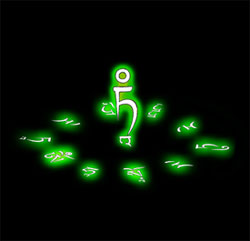What is satyagraha?
THE ROARING LIONS
Fr
FROM THE BUDDHIST MONLAM CHOGA TEXT
To those in the worlds of the ten directions, however many there are, all lions among humans , who appear during the three times- to all of them without exception, I pay homage with respectful body, speech and mind.
***
May I always be engaged through the power of my mind, in the inexhaustible melodic speech of the victorious ones appearing in the three times who turn the dharma like a wheel. As all future kalpas are penetrated, may I also penetrate them instantly; may I be engaged in and penetrate, in each instant, as many kalpas as are in the three times. May I instantly see those lions among humans. May I always be in engaged in their sphere of experience through the power of liberation.
(The King of Noble Aspirations)
FROM THE BUDDHIST MONLAM CHOGA TEXT
To those in the worlds of the ten directions, however many there are, all lions among humans , who appear during the three times- to all of them without exception, I pay homage with respectful body, speech and mind.
***
May I always be engaged through the power of my mind, in the inexhaustible melodic speech of the victorious ones appearing in the three times who turn the dharma like a wheel. As all future kalpas are penetrated, may I also penetrate them instantly; may I be engaged in and penetrate, in each instant, as many kalpas as are in the three times. May I instantly see those lions among humans. May I always be in engaged in their sphere of experience through the power of liberation.
(The King of Noble Aspirations)

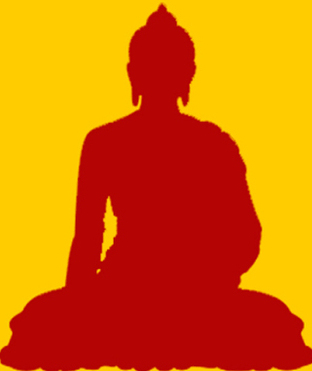









SATYAGRAHA
What is satyagraha?
(Source; Wikipedia)
Satyagraha (Sanskrit: सत्याग्रह satyāgraha) is a philosophy and practice of nonviolent resistance developed by Mohandas Karamchand Gandhi (also known as "Mahatma" Gandhi). Gandhi deployed satyagraha in the Indian independence movement and also during his earlier struggles in South Africa. Satyagraha theory influenced Nelson Mandela's struggle in South Africa under apartheid, Martin Luther King, Jr.'s campaigns during the civil rights movement in the United States, and many other social justice and similar movements. Someone who practices satyagraha is a satyagrahi.
(Source; Wikipedia)
Satyagraha (Sanskrit: सत्याग्रह satyāgraha) is a philosophy and practice of nonviolent resistance developed by Mohandas Karamchand Gandhi (also known as "Mahatma" Gandhi). Gandhi deployed satyagraha in the Indian independence movement and also during his earlier struggles in South Africa. Satyagraha theory influenced Nelson Mandela's struggle in South Africa under apartheid, Martin Luther King, Jr.'s campaigns during the civil rights movement in the United States, and many other social justice and similar movements. Someone who practices satyagraha is a satyagrahi.
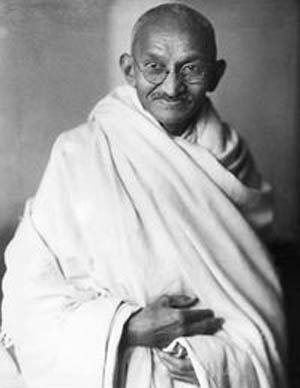
Satyagraha is a synthesis of the Sanskrit words satya (meaning "truth") and Agraha ("insistence", or "holding firmly to"). For Gandhi, satyagraha went far beyond mere "passive resistance" and became strength in practicing non-violent methods. In his words:
"Truth (satya) implies love, and firmness (agraha) engenders and therefore serves as a synonym for force. I thus began to call the Indian movement Satyagraha, that is to say, the Force which is born of Truth and Love or non-violence, and gave up the use of the phrase “passive resistance”, in connection with it, so much so that even in English writing we often avoided it and used instead the word “satyagraha”.
Gandhi described it as follows:
"I have also called it love-force or soul-force. In the application of satyagraha, I discovered in the earliest stages that pursuit of truth did not admit of violence being inflicted on one’s opponent but that he must be weaned from error by patience and compassion. For what appears to be truth to the one may appear to be error to the other. And patience means self-suffering. So the doctrine came to mean vindication of truth, not by infliction of suffering on the opponent, but on oneself.
In Gandhis' autobiography, The Story of My Experiments With Truth, he said that the term "passive resistance" was "too narrowly" construed. It could be interpreted as a weapon of the weak. It could be characterized by hatred. It could finally manifest itself as violence. A new word had to be coined-based entirely on the ideology of non violence as Gandhiji conceived it. The term "satyagraha"designated the struggle he was planning to launch.
What is satyagraha?
Here's a Buddhist parable...
While a small bird attempts to save a burning forest, engaged in a seemingly futile mission, she flies back and forth from the river dripping water from her beak. As the lone bird is running out of energy, the Buddhist gods, representing a compassionate function in the universe, see her desperate efforts and are so moved by her sincerity that they begin to cry. The "rain" of their tears extinguishes the fire and the forest survives.
Here's a Buddhist parable...
While a small bird attempts to save a burning forest, engaged in a seemingly futile mission, she flies back and forth from the river dripping water from her beak. As the lone bird is running out of energy, the Buddhist gods, representing a compassionate function in the universe, see her desperate efforts and are so moved by her sincerity that they begin to cry. The "rain" of their tears extinguishes the fire and the forest survives.
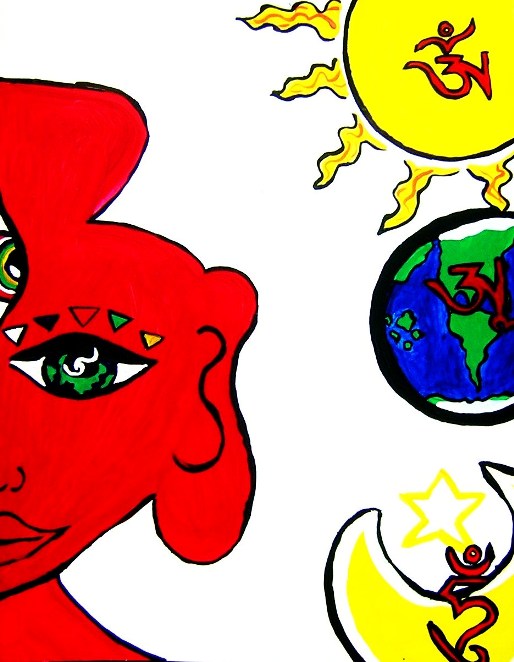
Gandhi rejected the idea that injustice should, or even could, be fought against “by any means necessary” — if you use violent, coercive, unjust means, whatever ends you produce will necessarily embed that injustice. To those who preached violence and called nonviolent actionists cowards, he replied: “I do believe that, where there is only a choice between cowardice and violence, I would advise violence....I would rather have India resort to arms in order to defend her honour than that she should, in a cowardly manner, become or remain a helpless witness to her own dishonour...But I believe that nonviolence is infinitely superior to violence, forgiveness is more manly than punishment.”
A small body of determined spirits fired by an unquenchable faith in their mission can alter the course of history.
- Mohandas Gandhi
As human beings, our greatness lies not so much in being able to remake the world - that is the myth of the atomic age - as in being able to remake ourselves.
- Mohandas Gandhi
Principles for Satyagrahis
Gandhi envisioned satyagraha as not only a tactic to be used in acute political struggle, but as a universal solvent for injustice and harm. He felt that it was equally applicable to large-scale political struggle and to one-on-one interpersonal conflicts and that it should be taught to everyone.
He founded the Sabarmati Ashram to teach satyagraha. He asked satyagrahis to follow the following principles (Yamas described in Yoga Sutra):
1. Nonviolence (ahimsa)
2. Truth — this includes honesty, but goes beyond it to mean living fully in accord with and in devotion to that which is true
3. Non-stealing
4. Chastity (brahmacharya) — this includes sexual chastity, but also the subordination of other sensual desires to the primary devotion to truth
5. Non-possession (not the same as poverty)
6. Body-labor or bread-labor
7. Control of the palate
8. Fearlessness
9. Equal respect for all religions
10. Economic strategy such as boycotts (swadeshi)
11. Freedom from untouchability
Civil disobedience and non-cooperation as practised under Satyagraha are based on the “law of suffering”, a doctrine that the endurance of suffering is a means to an end. This end usually implies a moral upliftment or progress of an individual or society. Therefore, non-cooperation in Satyagraha is in fact a means to secure the cooperation of the opponent consistently with truth and justice.
Gandhi's combination of renunciation of violence with active acceptance of suffering also received support from Jewish thinkers. Psychiatrist Victor Frankl and psychologist Bruno Bettelheim, both Holocaust survivors, confirmed Gandhi's experience that individuals who neither submit passively nor retaliate to violence find in themselves a new sense of strength, dignity, and courage. Gandhi's approach has been compared with Frankl's.
Mahatma Gandhi's influence in the world
“Generations to come will scarce believe that such a one as this ever in flesh and blood walked upon this earth.”
- Albert Einstein (A tribute to Gandhi)
Satyagraha theory also influenced Martin Luther King, Jr. during the campaigns he led during the civil rights movement in the United States:
"Like most people, I had heard of Gandhi, but I had never studied him seriously. As I read I became deeply fascinated by his campaigns of nonviolent resistance. I was particularly moved by his Salt March to the Sea and his numerous fasts. The whole concept of Satyagraha (Satya is truth which equals love, and agraha is force; Satyagraha, therefore, means truth force or love force) was profoundly significant to me. As I delved deeper into the philosophy of Gandhi, my skepticism concerning the power of love gradually diminished, and I came to see for the first time its potency in the area of social reform. ... It was in this Gandhian emphasis on love and nonviolence that I discovered the method for social reform that I had been seeking."
“In my life, I have always looked to Mahatma Gandhi as an inspiration, because he embodies the kind of transformational change that can be made when ordinary people come together to do extraordinary things.”
“That is why his portrait hangs in my Senate office; to remind me that real results will not just come from Washington, they will come from the people.”
- President Barack Obama
"We will speed the day when all of God's children, black men and white men, Jews and Gentiles, Protestants and Catholics, will be able to join hands and sing... Free at last, free at last, thank God Almighty, I'm free at last."
- Dr. Martin Luther King
(I have a dream speech 1963)
Democracy Now!
Satyagraha 100 Years Later: Gandhi Launches Modern Non-Violent Resistance Movement on Sept. 11, 1906.
September 11th 2006 has a special significance. It not only marks the fifth anniversary of the attacks on New York and Washington, it also marks 100 years to the day that Mahatma Gandhi launched the modern nonviolent resistance movement. We speak with Gandhi's grandson, Arun, about "Satyagraha."
http://www.democracynow.org/2006/9/8/satyagraha_100_years_later_gandhi_launches
Satyagraha 100 Years Later: Gandhi Launches Modern Non-Violent Resistance Movement on Sept. 11, 1906.
September 11th 2006 has a special significance. It not only marks the fifth anniversary of the attacks on New York and Washington, it also marks 100 years to the day that Mahatma Gandhi launched the modern nonviolent resistance movement. We speak with Gandhi's grandson, Arun, about "Satyagraha."
http://www.democracynow.org/2006/9/8/satyagraha_100_years_later_gandhi_launches

Tricycle Magazine
Satyagraha Special Section: Unbending Intent, An Interview with Philip Glass
Philip Glass’s opera Satyagraha, written in 1979, depicts the early years of Mahatma Gandhi in South Africa. Born in India in 1869, Gandhi studied law in England before accepting a job to mediate a dispute between two Indian businessmen in South Africa.
http://www.tricycle.com/magazine/special-section/satyagraha-special-section-unbending-intent-interview-philip-glass
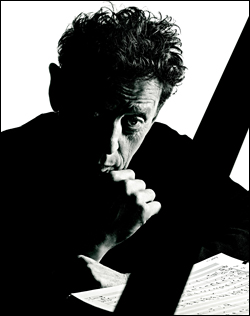
Tricycle Magazine
Satyagraha Special Section: Blueprints of Freedom
How Martin Luther King, Jr., brought satyagraha to the U.S. and revolutionized the civil rights movement.
http://www.tricycle.com/special-section/satyagraha-special-section-blueprints-freedom
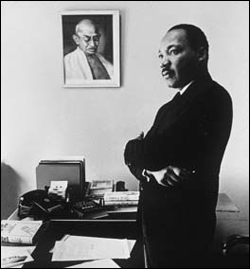
Articles about satyagraha
The Roaring Lions is the host website of an initiative created to free Orgyen Trinley Dorje, the 17th Karmapa, from political and religious oppression in India. By contributing your name to our global petition and offering your continued support, we will unite as one powerful voice so the Karmapas ability to freely travel as a spiritual teacher in our world can be realized and sustained.
I appeal to all people of the world irrespective of age, color, caste, religion, bank balance and political preference to join us in the tradition of satyagraha to bring justice to the Karmapas unwarranted confinement in India. Through this global campaign we will appeal to the authorities in India to allow the Karmapa freedom of movement. Help end the restrictions and suppression of the Karmapas teachings; he is a man of peace, his teachings benefit everyone equally in a time when understanding these virtues is critical. For the benefit of all beings and the flourishing of genuine Buddhist Dharma we stand for truth and justice as a global community.
(See THE CRYING WALL)
The Roaring Lions and Satyagraha...


Stay updated for news on this campaign- (Karmapa Press)
http://www.theroaringlions.com/karmapa-media_profile.html
http://www.theroaringlions.com/karmapa-media_profile.html
